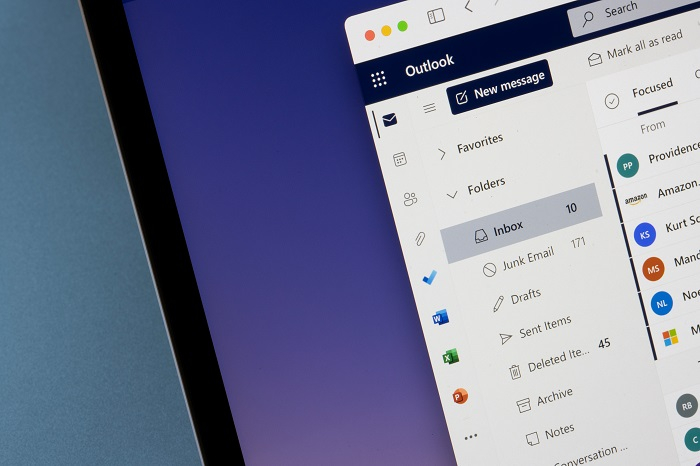
 Data Structure
Data Structure Networking
Networking RDBMS
RDBMS Operating System
Operating System Java
Java MS Excel
MS Excel iOS
iOS HTML
HTML CSS
CSS Android
Android Python
Python C Programming
C Programming C++
C++ C#
C# MongoDB
MongoDB MySQL
MySQL Javascript
Javascript PHP
PHP
- Selected Reading
- UPSC IAS Exams Notes
- Developer's Best Practices
- Questions and Answers
- Effective Resume Writing
- HR Interview Questions
- Computer Glossary
- Who is Who
Tasks in Outlook: How to Stay Organized (with Tips)

Business organizations worldwide use emails for internal and external communications with customers, vendors, partners, and others. In spite of technological advances, sending and receiving emails takes time and disrupts work.
The Task function in Microsoft Outlook is a useful tool for project management. Outlook allows you to create tasks, set reminders, and due dates, and track impending tasks. You may develop a clear plan for the day and week ahead by learning how to utilize Tasks in Outlook and determining the best approach to devote your time to accomplish a goal.
In this blog post, we will take you through how to utilize tasks in Outlook and why they're useful.
What is Outlook?
Microsoft Outlook is a personal information manager comprehended as part of the Microsoft Office suite. Although businesses use it as a mail program, it includes a calendar, task management, contact manager, note-taking, and dairy. It has been around since MS-DOS and is available in many companies around the country. Outlook 2016 has the most recent version of Microsoft's well-known suite, Office ProPlus.
What are Tasks in Outlook?
Tasks in Outlook is a feature that allows you to store a list of daily To Do items to help you recall crucial schedule information. It can assist you in prioritizing your work so that you can determine what needs urgent attention and what can wait until later in the day or week. Task lists also show you what's coming up in the following week. This may help you manage projects and teams while creating a sense of success and progress as you check items off your list.
Microsoft To-Do replaces Tasks and includes new features such as Smart List. You may use this tool to build filtered lists, monitor chores, and plan your day.
Here are the default lists ?
My Day
This Smart List keeps track of the chores you wish to complete during the day. When you open it at the start of the day, it is empty, but you add tasks to it by transferring them from other lists or adding new ones. During midnight, Outlook clears My Day, but you can view your tasks on other lists, so you don't lose them.
Important
This Smart List contains all of the tasks that you have prioritized. Right-click and select "Mark as Important" to prioritize one. Clicking the star symbol marks it as significant.
Planned
This Smart List contains all of the tasks having a due date or a reminder. When you create a task, you can add it to the list by assigning it a due date or a reminder. When you add a due date or reminder to an existing task, it gets moved to this Smart List.
Tasks
This is the starting point for any tasks you create. All tasks remain on this list until they are moved to one of the other Smart Lists. To make one, select "Type a new task box" or "Task Input Panel." You may also click the + symbol to the right of "Add a task."
Flagged Emails
To Do also generates a Smart List from the emails you've tagged. When you mark an email as important or add a reminder to it, To Do duplicates the Flagged Email Smart List. You may also add the email to your My Day Smart List by dragging and dropping it.

How to use Tasks in Outlook?
Here are the steps you may take to create tasks in Outlook's Tasks and To-Do lists ?
Use classic Tasks
You can still utilize the traditional tasks tool to plan your day and projects. Here are the steps to creating a new task in Outlook Classic.
Tasks version ?
Launch Outlook.
Choose "New Item."
Choose a task
In the "Subject" box, give the task a name.
Set the start and end dates.
Establish a priority and a reminder.
Click the "Task," "Save," and "Close" buttons.
Use the To Do list.
The To Do function in Outlook is another option for creating a task. You may add these list items to your schedule by dragging them on your calendar. Here are some actions you can take ?
Select "Type a new task box" from the "To Do Bar."
Fill up the blanks with your assignment description.
To finish, press the "Enter" key.
Modify the settings
Determine how much time you will need to finish the activity and adjust the item on your calendar to accommodate that period. You can invite additional project team members and set a reminder. When you make many chores into appointments, the reminders notify you when it's time to stop working on one and start working on another.
Attach Files to Tasks
One can attach a file to a job you're assigning to a team member if you have one. To do so, click "Add a file" and then go to the image or document you wish to attach. If you're using Microsoft 365, you may attach a file by pasting the file's link into the "Add note" area.
Share Task Lists
You can share task lists with others using To Do. Individual jobs cannot be shared, however, task lists can be shared. When you provide someone access, they may see and change the list. To share a task list, right-click on its name and choose "Share List," then add individuals from your contacts.
Use Additional Tasks Features
Here are some extra Tasks features to consider ?
To dos assigned ? If you have an employee or a partner to work with, you can set tasks and assign them to the person in charge of fulfilling them.
Status updates ? Use the status update and % complete features to ensure that your tasks are on track. If you're halfway through a task you can label it as 50% complete or "In Progress."
Export function ? You can easily export your projects and tasks to a spreadsheet using Outlook's export tool. As a result, you can develop progress reports for your projects.
Categorization ? Use the categorization tool for quickly locating categories of tasks. Outlook has basic categories with assigned colors, but you may build your own and apply colors to them.
Time tracking ? With the time tracking function, freelancers who charge by the hour may keep track of how long they work on a project. You can choose one or both of the "Total Work" and "Actual Work" sections in Outlook, depending on how you track your time.
Delegate tasks ? Once you've created a task and assigned it to someone you work with, you can delegate it by clicking the send button. You can examine your sent messages folder to ensure that an assignment email is delivered via Outlook.
Conclusion
Outlook and Office 365 can help you to supercharge your productivity.
When you know how to get the most out of your email technology solution, being productive, spending your time evenly, and managing your inbox become much more convenient.
Use these easy Outlook hacks and free up your time for more critical activities. So, the next time you're using Outlook to manage your emails and tasks, keep a couple of these suggestions in mind.

